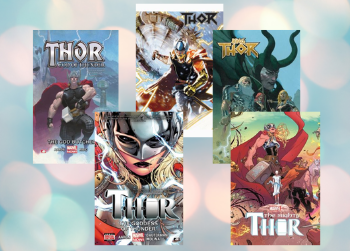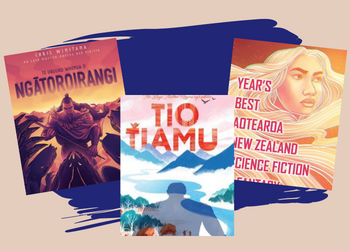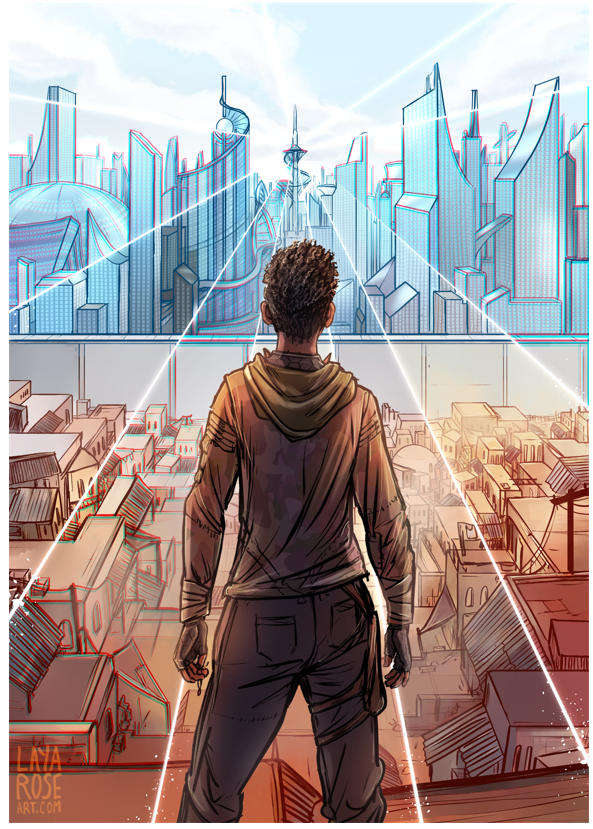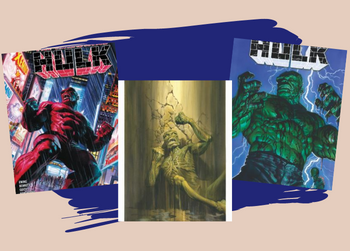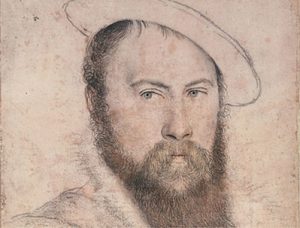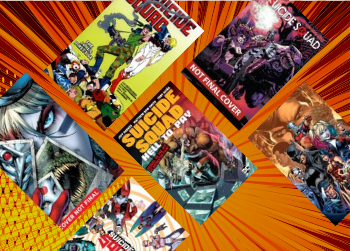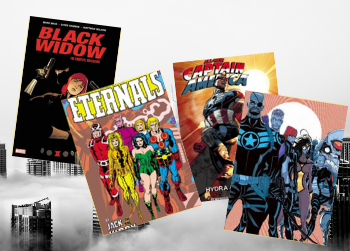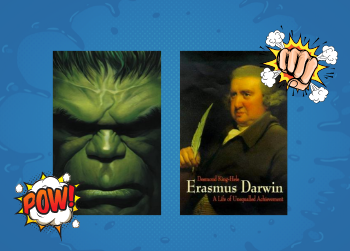July sees the release of Thor: Love and Thunder, the fourth film in the Marvel Cinematic Universe’s Thor series, and the second directed by Aotearoa’s own Taika Waititi. The plot of Love and Thunder is based around characters and concepts from the recent Thor comics, including the villain Gorr the God Butcher, and Jane Foster becoming worthy of Mjolnir.
This ‘run’ on Thor, written by Jason Aaron and primarily drawn by Esad Ribic and Russell Dauterman, was critically beloved for its dazzling art, its bold plot twists and its cosmic scope. However, while it was all written by the same writer, during its run between 2013 to 2019 the Thor series itself was rebooted not once, not twice, but four separate times, making it difficult to know which ‘Thor Volume One’ to start from. So to help you prepare for the new film and guide you through the Thor comic’s many reinventions, we’ve put together this mighty reading guide!
First series: Thor, God of Thunder meets the God Butcher
Beginning in 2013, Thor: God of Thunder by Jason Aaron and artist Esad Ribic introduces Gorr, the God Butcher (played by Christian Bale in Thor: Love and Thunder), an vengeful alien who wants to destroy every god across time and space. To stop him, Thor teams up with his younger self from his Viking days and an older, surlier All-Father Thor from the future.
Thor, God of Thunder [1] : the God Butcher / Aaron, Jason (also on Libby)
Thor, God of Thunder [2] : Godbomb / Aaron, Jason (also on Libby)
Thor, God of Thunder [3] : the accursed / Aaron, Jason (also on Libby)
Thor, God of Thunder [4] : the last days of Midgard / Aaron, Jason (also on Libby)
Original Sin – Thor becomes unworthy
Jason Aaron also wrote Original Sin, a crossover series where the Marvel heroes uncover secrets about their pasts while investigating the death of the Watcher. During this series, Thor learns a devastating truth that causes him to become unworthy of wielding Mjolnir, setting the stage for a new Thor to arrive.
Original sin : Thor & Loki : the tenth realm / Aaron, Jason
Original sin. Who shot the Watcher? / Aaron, Jason
Second series: Who is The Mighty Thor?
With Thor now unworthy of wielding Mjolnir, the hammer goes to Doctor Jane Foster, Thor’s ex-girlfriend, and she headlines a new series as The Mighty Thor. In her first series running for two volumes, written again by Aaron and drawn by Russell Dauterman, she fights the minotaur CEO Dario Agger and reveals her identity to the superhero community. After being teleported to Battleworld during Secret Wars, she joins the Thor Corps, a police force made entirely of Thor variants from across the multiverse.
Thor : the goddess of thunder / Aaron, Jason (also on Libby)
Thor [2] : who holds the hammer? / Aaron, Jason
Secret wars / Hickman, Jonathan
Third series: The Mighty and the Unworthy
The Mighty Thor reboots again after Secret Wars, again with Jane Foster as the Mighty Thor, which ran for five volumes. Meanwhile, the original Thor (now going by ‘Odinson’) gets his own limited series called The Unworthy Thor as he struggles with his identity following the loss of his hammer.
The mighty Thor [1] : thunder in her veins / Aaron, Jason (also on Libby)
The mighty Thor [2] : Lords of Midgard / Aaron, Jason (also on Libby)
The mighty Thor [3] : the Asgard/Shi’ar war / Aaron, Jason (also on Libby)
The unworthy Thor / Aaron, Jason
The mighty Thor [4] : the war Thor / Aaron, Jason (also on Libby)
The Mighty Thor [5] : the death of the Mighty Thor / Aaron, Jason (also on Libby)
Final series: The War of the Realms
Jason Aaron’s final Thor series has Thor Odinson reclaim Mjolnir as his enemies from across the Nine Realms band together to invade Midgard. This results in the The War of the Realms, bringing Aaron’s near-decade long run on the God of Thunder, and now also Goddess of Thunder, to a close.
Thor [1] : God of Thunder reborn / Aaron, Jason (also on Libby)
Thor [2] : road to war of the realms / Aaron, Jason (also on Libby)
The war of the realms / Aaron, Jason
Thor [3] : war’s end / Aaron, Jason
But wait, there’s Thor!
Except not quite! To wrap up a few plot threads, Aaron definitively ends his Thor run with the miniseries King Thor, featuring Thor’s future self from all the way back in the first series. Meanwhile, Jane Foster gains a new weapon called Undrjarn the All-Weapon and becomes a new Valkyrie.
Valkyrie : Jane Foster [1] : the sacred and the profane / Ewing, Al (also on Libby)
Valkyrie : Jane Foster [2] : / Ewing, Al (also on Libby)
What’s next for Waititi?
Taika Waititi’s next comic-to-film project is an adaptation of The Incal, a French science-fiction comic by famed writer and director Alejandro Jodorowsky and legendary artist Moebius, about a down-on-his-luck detective who gets embroiled in a cosmic prophecy. You can also read it in its original six-issue run on Libby starting here. Waititi is also attached to direct the long-gestating film of the classic cyberpunk manga Akira, which runs for six volumes.


